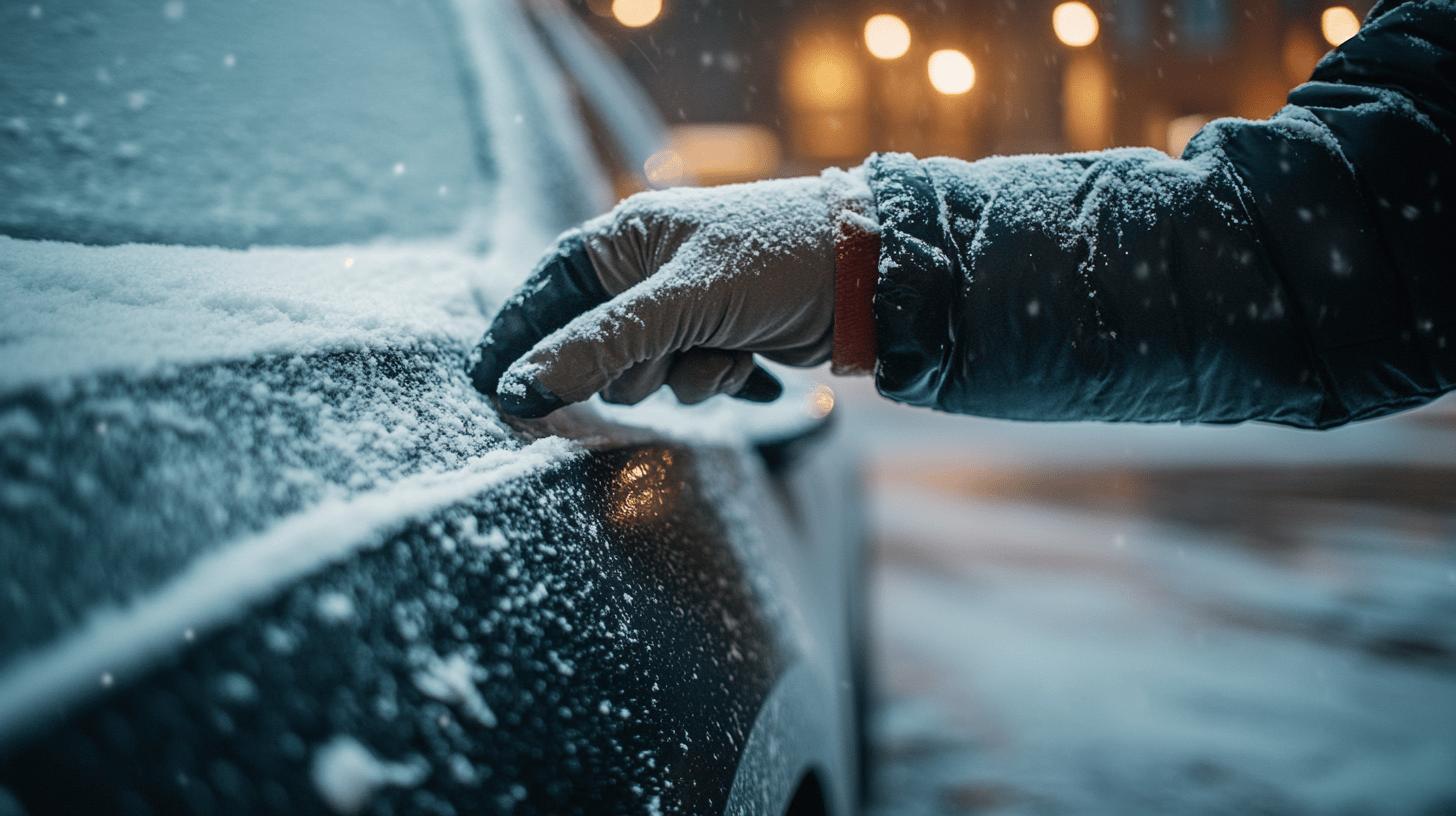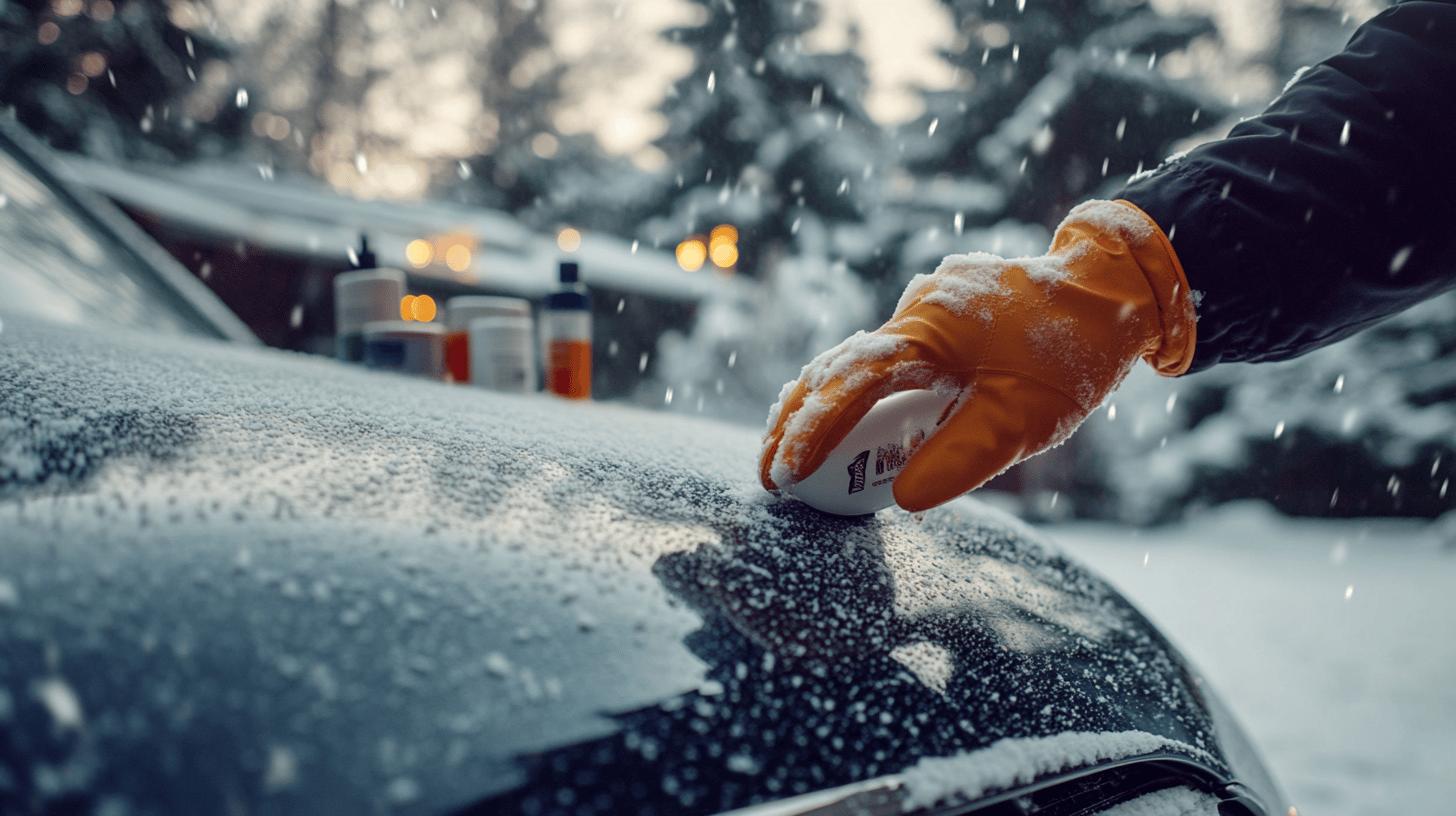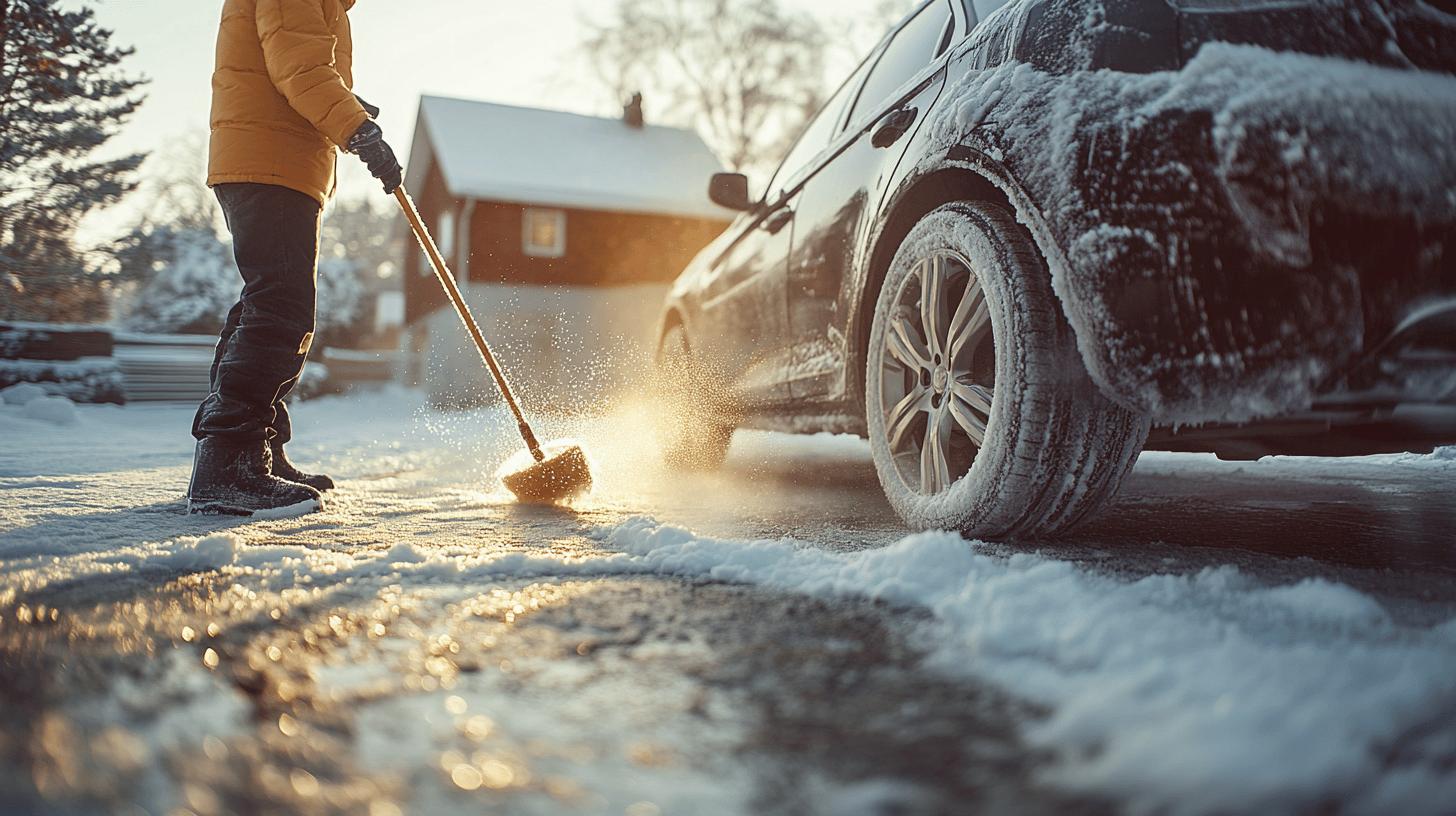How often do you think about your car’s paintwork when winter rolls around? It’s easy to focus only on keeping your vehicle running smoothly, but neglecting your car’s exterior can lead to costly damage. In this guide, Velocity Car Spray reveals essential tips to protect your car’s paintwork from the harsh winter elements. By following our advice, you can ensure that your vehicle remains in pristine condition, despite the snow, sleet, and road salt. Ready to learn how to shield your car’s paint job until spring? Let’s dive into the best winter maintenance practices.
Effective Winter Car Wash Techniques
Regular car washes are crucial during winter to protect your paintwork from road salt, dirt, sleet, and snow. If not removed promptly, these elements can cause significant damage, leading to rust and paint degradation. A consistent wash routine, approximately once every week or two, helps prevent these issues and maintains the car’s appearance.
Begin the winter car wash process by rinsing your car thoroughly with a high-pressure spray. This step removes loose debris and helps to break up road salt that may have accumulated in hard-to-reach areas. Next, use winter-specific car cleaning products, designed to work effectively in cold temperatures. These products often contain ingredients that prevent freezing and ensure thorough cleaning. Apply a car shampoo using a wash mitt to avoid scratches, starting from the top and working your way down. Rinse the car again to remove all soap residues, which can attract dirt if left behind.
Follow these additional tips to maintain the cleanliness of your car’s exterior throughout winter. Dry the car immediately after washing to prevent water spots, which can freeze and cause damage. Use a microfibre towel to ensure a streak-free finish. Inspect the undercarriage and wheel wells for accumulated salt and grime, as these areas are particularly vulnerable to corrosion. Applying a layer of wax or sealant post-wash protects against harsh winter elements, further safeguarding the paintwork.
Protective Waxing and Sealants for Winter
Waxing and sealing your car’s paint before and during winter is crucial for protecting against harsh weather conditions. A thorough wax application provides a durable barrier against water, road salts, and other contaminants, preserving the vehicle’s appearance and structural integrity.
Synthetic waxes, such as Car Lack 68 and Zaino, are highly recommended due to their superior durability against water and road salts. These waxes form a resilient layer that can withstand the abrasive effects of winter elements. For those who prefer natural products, Collinite waxes offer an excellent balance between durability and affordability, making them a popular choice for winter protection. Paint sealants, often made from synthetic polymers, provide an even longer-lasting shield, making them ideal for extreme winter conditions.
Recommended Waxing and Sealing Products:
- Car Lack 68: Excellent water resistance and long-lasting protection against road salts.
- Zaino: Renowned for its durability and ease of application, offering a high-gloss finish.
- Collinite 845: A carnauba-based wax that is both durable and cost-effective, providing an excellent protective layer.
- Meguiar’s Ultimate Liquid Wax: Offers advanced synthetic polymers for long-lasting protection and a deep shine.
- Chemical Guys JetSeal: A paint sealant known for its extreme durability and ability to protect against harsh weather conditions.
To apply these products correctly, thoroughly wash and dry your car to remove any contaminants. Apply the wax or sealant using a foam applicator pad, working in small sections to ensure even coverage. Allow the product to cure as per the manufacturer’s instructions before buffing off with a microfibre towel. For optimal protection, consider applying multiple layers, especially if using a synthetic wax or sealant, to enhance the durability and effectiveness of the protective barrier. Regular maintenance and reapplication throughout the winter will ensure your car’s paint remains pristine.
Addressing and Preventing Paint Chips in Winter

Addressing paint chips before winter is crucial to prevent further damage to your vehicle’s paintwork. When temperatures drop, water can freeze under the paint, causing expansion and leading to larger cracks and peeling. Tackling these issues immediately can save you from more extensive and costly repairs in the long run.
To fix paint chips using a touch-up paint kit, follow these steps:
- Clean the Area: Wash the chipped area with soap and water, then dry thoroughly to remove any dirt or debris.
- Sand the Chip: Lightly sand the chipped area using fine-grit sandpaper to smooth out rough edges and ensure better adhesion of the touch-up paint.
- Apply Primer: Use a small brush to apply a thin layer of primer to the chipped area. Allow it to dry as per the manufacturer’s instructions.
- Apply Touch-Up Paint: Carefully apply the touch-up paint, matching the colour to your vehicle’s paint code. Use multiple thin layers rather than one thick coat, allowing each layer to dry before applying the next.
- Apply Clear Coat: Once the touch-up paint is dry, apply a clear coat to protect the repaired area and blend it with the surrounding paintwork.
In addition to repairing existing chips, take preventive measures to avoid new ones during winter. Regularly washing your car to remove road salt and grime, applying a protective wax or sealant, and avoiding driving too close to other vehicles can help maintain your car’s paintwork and prevent chips from occurring.
Importance of Regular Maintenance and Inspections
Regular washing and inspections are vital during winter months to maintain your car’s paintwork. Washing your car once a week helps prevent grit, dust, and dirt from accumulating and causing damage. Regular inspections allow you to catch and address any signs of paint damage or rust early, preventing further deterioration.
To perform a thorough inspection of your car’s paintwork, start by examining the exterior under good lighting. Look for any chips, scratches, or rust spots. Pay special attention to areas prone to damage, such as the wheel arches, door sills, and the front bumper. Use a magnifying glass if necessary to identify smaller imperfections. Next, run your hand gently over the surface to feel for any rough patches or irregularities that might indicate underlying issues. Check the seams and edges of panels for any signs of rust or bubbling paint, which could signal moisture penetration.
The benefits of regular maintenance and inspections cannot be overstated. Addressing minor issues promptly prevents them from becoming major problems, saving you time and money in the long run. Regular care also keeps your car looking its best, maintaining its resale value and ensuring it remains in good condition throughout the harsh winter months. Taking a weekend to perform these checks and maintenance tasks can help safeguard your vehicle’s appearance and integrity.
Using De-Icing and Snow Removal Tools Safely
Using the right tools for de-icing and snow removal is essential to prevent damaging your car’s paintwork. Harsh scrapers can scratch the paint, leading to unsightly marks and potential rusting. Instead, opt for tools specifically designed to be gentle on your vehicle’s surfaces. Paint-friendly ice scrapers and de-icers are particularly recommended to avoid any damage.
Recommended Tools and Products for Safe Snow and Ice Removal:
- Soft Snow Brush: A soft-bristled brush helps clear snow without scratching the paint.
- Paint-Friendly Ice Scraper: These scrapers are designed to remove ice without damaging the paint surfaces.
- De-Icing Spray: Formulated to melt ice quickly without harming the paint or other surfaces.
- Microfibre Towels: Perfect for wiping down the car after de-icing to prevent water spots and streaks.
- Windshield Cover: Using a cover prevents ice accumulation on the windshield, reducing the need for scraping.
When de-icing, avoid using scrapers on the paintwork; they are only suitable for windows. Always brush off loose snow first before applying de-icing spray to stubborn ice patches. Dry the car thoroughly after de-icing to prevent water from freezing and causing further damage. Regularly maintaining your vehicle’s protective wax layer can also help guard against potential harm during the winter months.
Winter Paint Protection Products and Techniques

Winter paint protection is crucial to prevent scratches and moisture penetration, which can lead to oxidation or cracking from freezing and thawing. Applying the right products and techniques will help safeguard your vehicle’s paintwork throughout the harsh winter months.
For optimal protection, consider using products like Iron Out Contaminant Remover and ObliTARate Tar and Glue Remover. These products effectively remove embedded contaminants and tar spots. Follow this with claying the car using Glide Clay Lube and a Clay Bar or Clay Pad to ensure a smooth surface free from impurities. Anti-corrosion treatments are also beneficial, as they help protect against rust and other damage caused by winter conditions. These treatments form a protective layer that prevents moisture from reaching the metal surfaces, thus avoiding rust formation.
Recommended Winter Paint Protection Products:
- Iron Out Contaminant Remover: Removes brake dust and iron particles embedded in the paint.
- ObliTARate Tar and Glue Remover: Effectively removes tar spots and glue residues from the paint surface.
- Glide Clay Lube: Used with a Clay Bar or Clay Pad to remove contaminants, leaving the paint surface smooth.
- Chemical Guys JetSeal: Provides a durable protective layer that shields against harsh winter elements.
- Bilt Hamber Anti-Corrosion Wax: Offers excellent protection against rust and moisture penetration.
In addition to using these products, maintaining paint protection throughout winter involves regular washing and reapplication of wax or sealant. Ensure to wash your car with a high-pressure spray to remove any road salt and grime. Apply a fresh layer of wax or sealant every few weeks to maintain the protective barrier. Avoid parking under trees where sap and bird droppings can damage the paint. Regularly inspect the paintwork for any signs of damage or wear and address them promptly to keep your car looking its best.
Expert Tips for Long-Term Paint Preservation
Long-term paint preservation during winter is essential to protect your car from harsh weather conditions. Synthetic waxes and sealants offer superior protection against water and road salts, which can cause significant damage if left unchecked. Regular maintenance and prompt attention to any damage can prevent further deterioration and keep your vehicle’s paintwork in pristine condition.
Expert Recommendations for Maintaining Paint Protection Throughout Winter:
- Use Synthetic Waxes and Sealants: These products provide durable protection against water and road salts, helping to maintain the integrity of your car’s paintwork.
- Regular Inspections: Frequently check your car for any damage to the clear coat. Addressing chips and scratches promptly can prevent further deterioration.
- Avoid Parking Under Trees: Tree sap and bird droppings can damage the paint. Always park in a sheltered location when possible.
- Apply Multiple Layers of Protection: For enhanced durability, consider applying multiple layers of wax or sealant. This creates a thicker barrier against winter elements.
- Routine Washing: Keep your car clean by washing it regularly. Removing road salt and grime helps maintain the protective layer and prevents corrosion.
Additional measures to ensure the long-term preservation of your car’s paintwork include using a high-quality car cover when the vehicle is not in use and avoiding the use of abrasive cleaning tools that can scratch the paint. Regularly reapply wax or sealant throughout the winter months to maintain a robust protective barrier. By following these expert tips, you can safeguard your car’s paintwork against the harsh winter conditions and keep it looking its best.
Protect your vehicle’s paintwork this winter – Contact us for expert advice and services today!
Final Words
During the winter months, effective car washing, protective waxing, addressing paint chips, and regular maintenance are essential steps to preserve and protect your vehicle’s paintwork.
Winter-specific car cleaning products play a pivotal role in maintaining the car’s finish, while the correct use of de-icing tools and protective products ensures longevity.
A well-maintained vehicle not only looks good but is also protected from the harsh elements, ensuring its lasting appeal.
Implementing these strategies for caring for your paintwork in the winter months will keep your car in top condition year-round.
FAQ
Can you touch up car paint in winter?
Touching up car paint in winter requires a temperature-controlled environment. Cold temperatures can affect paint adhesion, so it’s best to perform touch-ups indoors or when temperatures are above freezing.
Should you paint outside in winter?
It is not advisable to paint outside in winter. Cold temperatures and moisture can negatively impact paint application and drying, leading to poor results and potential long-term damage.
How do you paint in the winter?
To paint in winter, use a heated, well-ventilated space. Ensure the car surface is dry and clean, and use products specifically formulated for cold conditions to enhance adhesion and drying.
What is the best winter protection for cars?
The best winter protection for cars includes regular washing to remove salt and grime, applying a durable synthetic wax or sealant, and using de-icing tools that do not damage paintwork.

